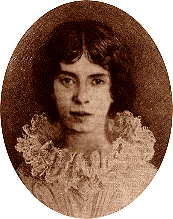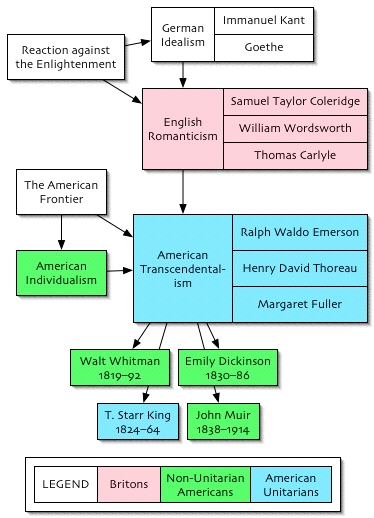

Emily Dickinson
Wasatch Range Writing Project
Teachers Workshop
|
Timeline of Emily Dickinson
|
|
| American
Transcendentalism American transcendentalism was an important movement in philosophy and literature that flourished during the early to middle years of the nineteenth century (about 1836-1860). It began as a reform movement in the Unitarian church, extending the views of William Ellery Channing on an indwelling God and the significance of intuitive thought. It was based on "a monism holding to the unity of the world and God, and the immanence of God in the world" (Oxford Companion to American Literature 770). For the transcendentalists, the soul of each individual is identical with the soul of the world and contains what the world contains.  |
Dickinson and her Times As a group, the transcendentalists led the celebration of the American experiment as one of individualism and self-reliance. They took progressive stands on women's rights, abolition, reform, and education. They criticized government, organized religion, laws, social institutions, and creeping industrialization. They created an American "state of mind" in which imagination was better than reason, creativity was better than theory, and action was better than contemplation. And they had faith that all would be well because humans could transcend limits and reach astonishing heights. Dickinson's recipes Dickinson had a bit of a reputation as a baker in her hometown of Amherst, Massachusetts. In fact, she was particularly known for her gingerbread (and Rye and Indian bread), and would lower a basket of it to children below.
Dickinson's Garden |
Bibliography
|